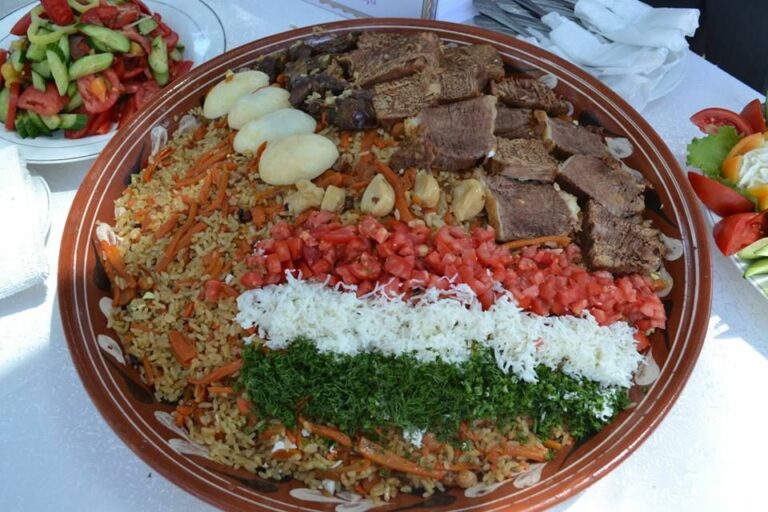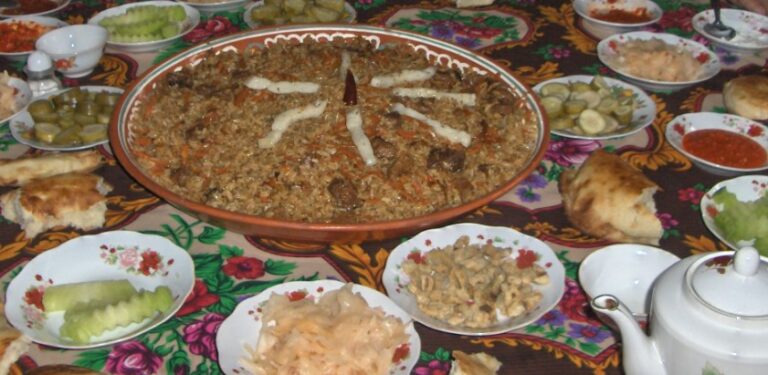Introduction: Tajik Cuisine
Tajik cuisine is a unique blend of Persian and Central Asian flavors, reflecting the country’s location at the heart of the Silk Road. It features a wide range of dishes that are both delicious and hearty, making use of fresh herbs, vegetables, and spices that are commonly found in the region.
Tajik cuisine is known for its emphasis on meat, particularly lamb, beef, and chicken, which are typically cooked in a variety of ways. Rice is also a staple of Tajik cuisine, often served alongside stews, soups, and grilled meats.
Festival Foods: Why they Matter
Festivals and special occasions are an important part of Tajik culture, providing an opportunity for families and friends to come together and celebrate. Food plays a significant role in these celebrations, with a wide range of traditional dishes being prepared to mark the occasion.
In addition to providing sustenance, festival foods also play an important symbolic role, representing cultural traditions and values. They are an important way to pass on knowledge and skills from one generation to the next, ensuring that the unique flavors and techniques of Tajik cuisine are preserved for future generations.
Osh: The National Dish of Tajikistan
Osh is a rich and flavorful meat and rice dish that is considered the national dish of Tajikistan. It is typically made with lamb or beef, along with carrots, onions, garlic, and a variety of herbs and spices.
Osh is often served at special occasions such as weddings and festivals, where it is prepared in large quantities and shared among guests. It is a symbol of hospitality and generosity, reflecting the importance of community and social gatherings in Tajik culture.
Plov: A Festive Rice Dish
Plov is a popular rice dish that is commonly served at festivals and special occasions in Tajikistan. It is made with rice, meat (usually lamb or beef), carrots, onions, and a range of spices including cumin, coriander, and garlic.
Plov is often prepared in large quantities, with each family having their own unique recipe that has been passed down through generations. It is a dish that is steeped in tradition, and is a symbol of the strong cultural values that underpin Tajik society.
Shurbo: Tajikistan’s Hearty Soup
Shurbo is a hearty soup that is typically made with lamb or beef, along with a range of vegetables such as potatoes, carrots, and onions. It is flavored with a variety of herbs and spices, including dill, coriander, and cumin.
Shurbo is a popular dish at festivals and special occasions, where it is often served as a starter or as a main course. It is a comforting and nourishing dish that reflects the importance of warmth and hospitality in Tajik culture.
Sweet Treats: Halva and Baklava
Halva and baklava are two popular sweet treats that are commonly served at festivals and special occasions in Tajikistan. Halva is a dense, sweet confection made from ground sesame seeds, sugar, and honey, while baklava is a flaky pastry filled with chopped nuts and soaked in syrup.
Both halva and baklava are served as a symbol of celebration and joy, reflecting the importance of sweetness and indulgence in Tajik culture. They are often accompanied by tea or coffee, with guests enjoying them as a well-deserved treat after a hearty meal.

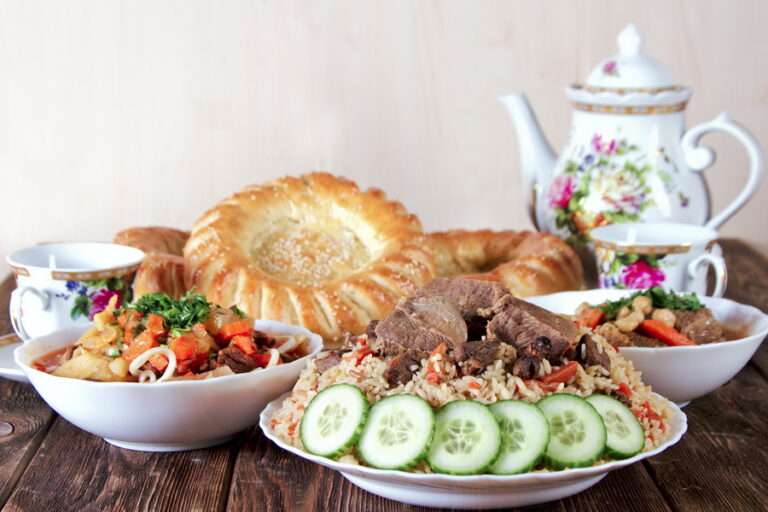
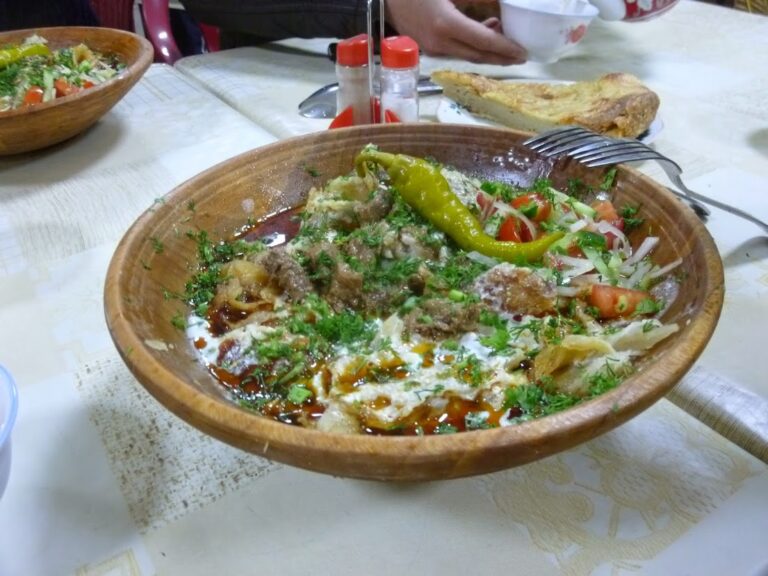


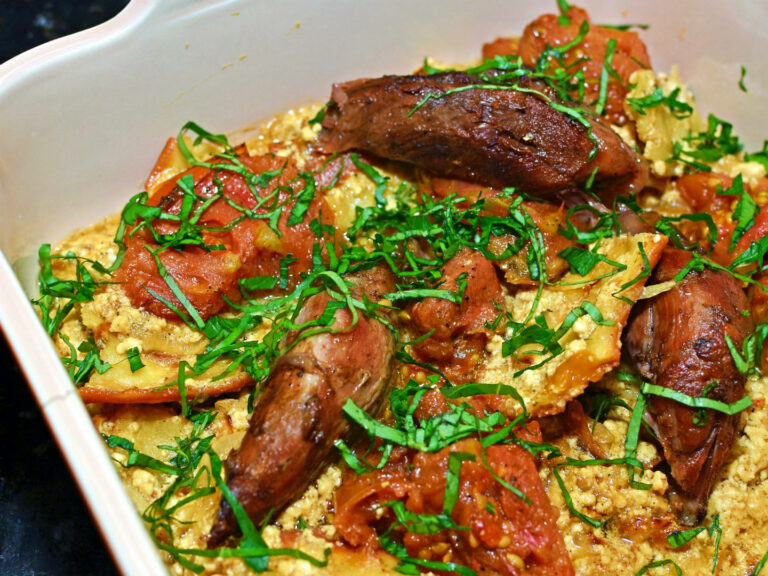
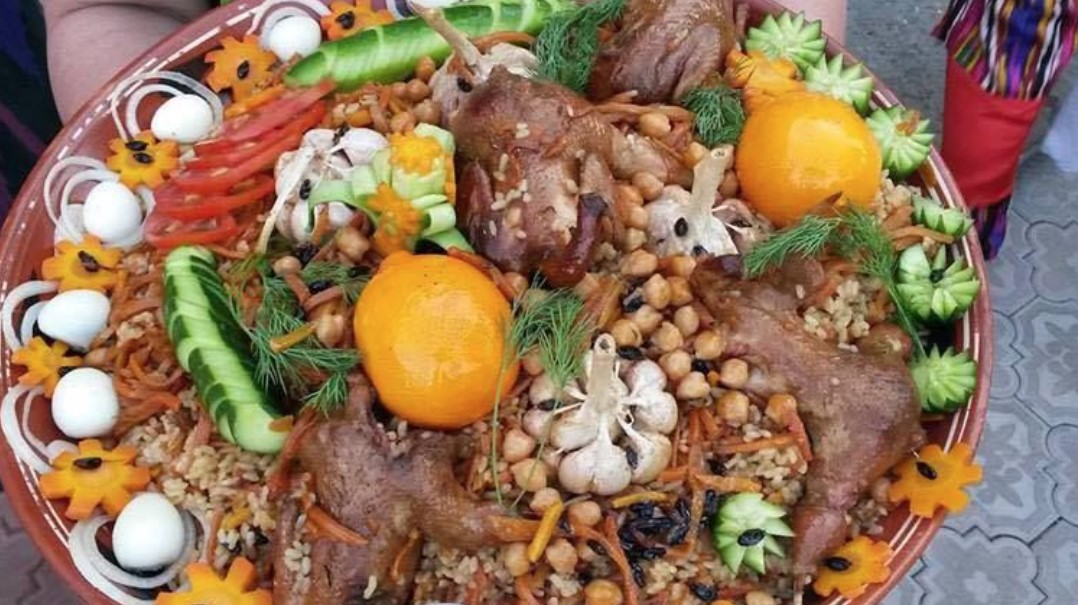
![Can you recommend a good Tajik restaurant in [specific location]?](https://foodnerdy.com/blog/wp-content/uploads/2023/05/5-62-768x576.jpg)
